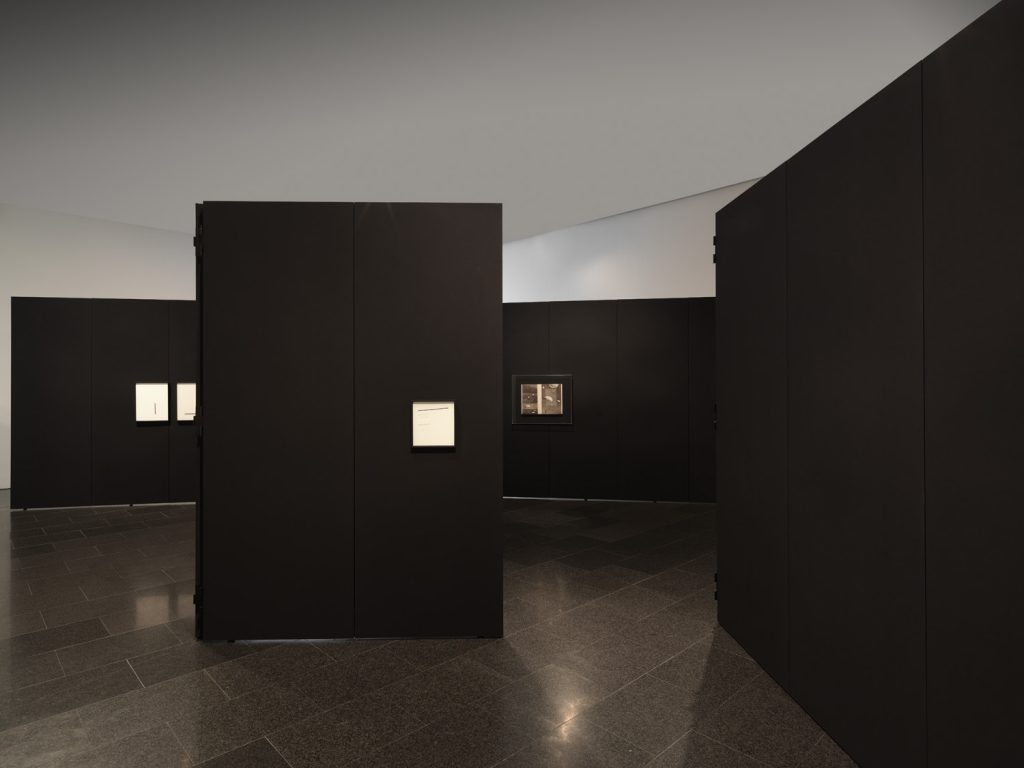Artist:
Florian Pumhösl (born 1971 in Vienna, Austria; lives and works in Vienna).
Materials:
Enamel on glass, vitrine, and upholstered screen; variable dimensions.
Description:
“The interaction between these two concerns is especially well illustrated by Pumhösl’s expansive, room-size installation Modernology (Triangular Atelier), 2007, which was on view at Documenta 12. Based on the artist’s research into multidisciplinary exchanges among the German, Russian, and Japanese historical avant-gardes, the work features adjustable architecture—made of two black buckram–covered partitions, each featuring several hinged sections—intended to evoke the black walls at the exhibition organized in 1914 in Tokyo by the German Expressionist gallery Der Sturm as well as Tomoyoshi Murayama’s Triangular Atelier, a two-story studio and exhibition space the Japanese designer built next to his house in 1926. Hanging on Pumhösl’s folding screens are three unframed single-color textile works made in 1955 by Atsuko Tanaka, which commingle the decorative concerns of fabric design and the self-referential autonomy of monochromatic painting. Two Lucite display cases mounted nearby contain editions of the magazine Front from 1943—one showing parachute jumpers in formation, and the other a white airplane wing whose red circle suggests both the Japanese flag and the motifs of Constructivist painting—reflecting military recodings of the artistic avant-gardes’ topoi and rhetorics.”
—André Rottman, “Florian Pumhösl,” trans. Elizabeth Zucker, Artforum (September 2009): 276-9.
“Here as in his earlier works and exhibitions, the references to non-Western modernities function in order to break open the conception of European and US -American ‘modernity’ as a socio-geographically and culturally coherent history of genesis and development. Both exhibitions, and especially ‘Modernology,’ by taking into account (in the form in which they were later shown) the site of their presentation, reveal the tension between a critique of universalism and the contemporary globalization of such critique by virtue of a ubiquitous ‘critical’ exhibition and discourse business.”
—Sabeth Buchmann, “Abstract Characters? Reference and Formalism in the Works of Florian Pumhösl,” Texte zur Kunst 69 (March 2008): 98-111, 182-90.


